So many moms out there experience these debilitating headaches, and so many of us find little relief. For those of you who have never had a migraine, here is a brief description: extreme, throbbing pain, usually on one side the head, that is relentless. It pounds away minute by minute and is accompanied by heightened sensitivity to light, sound, and even smell. Almost anything will make it worse. Some experience nausea or vomit, some have a weird halo (or “aura”) that obscures their vision, others must hide away in a dark room, and the worst must go to the E.R. because the pain is so great. Most get no relief until they go to bed that night and hope it’s gone in the morning. For many sufferers, it has miraculously disappeared after a good ni ght’s sleep; for others, it can continue for two to three more days. The pain can be so excruciating that most people are willing try anything to make it go away, and most things don’t work. Adding children to the mix (especially young and needy ones) when a migraine hits tests the strength of the strongest moms!
ght’s sleep; for others, it can continue for two to three more days. The pain can be so excruciating that most people are willing try anything to make it go away, and most things don’t work. Adding children to the mix (especially young and needy ones) when a migraine hits tests the strength of the strongest moms!
I have suffered from migraines since the age of 26 (I am now 42). I have researched the topic, tried almost any and every suggested remedy, gone to doctors, acupuncturists, and herbalists. Here is what I learned over the years to hopefully help anyone with these mega-headache blues:
Causes and Triggers:
Following are some common causes and triggers that contribute to a migraine occurring. Note that it isn’t just one of these that will cause the headache, it is typically a combination of them. I spent many years trying to find that one culprit, thinking that I could eliminate that and be cured; and it took me a long time to realize that it’s not the case. Too many triggers experienced at the same time will cause that dreaded pounding to start; there isn’t one source.
– Migraines are typically hereditary. If you get migraines and start asking around your family members, you’ll probably find that someone else gets them too. My dad does occasionally, as well as my aunt who experiences them often, and now my younger cousins. Unfortunately, we’re a migraine family, but they also have been a good resource for me when trying to discover my common triggers. Often, they are the same.
– Getting too little sleep. This is a big contributor to the onset of a migraine, and I know that if I have multiple nights of no sleep, a migraine is sure to follow. Sleep can be nearly impossible with little ones, but try to make it up where you can. Go to bed when your babies do, nap when they do too, or try to find some time during lunch breaks to just close your eyes and rest that poor brain.
– Having too much caffeine. Caffeine, our lifesaver in the morning or when we don’t get that beloved sleep, can also bring on a migraine faster. It constricts your blood vessels and increases your heart rate. It feels good in the moment, but can also make that incessant pounding worse. I finally kicked the coffee habit after many loving years with my darling java, but it has really helped. I still drink tea, a combination of black and green, so I still intake caffeine, but not at the same rate or in the same concentration.
– Not eating regularly, or drinking enough water. In combination with healthy sleep, migraine sufferers also benefit from eating at least every three hours, as well as drinking plenty of fluids (ideally water). The drop in blood sugar really affects those with migraines. Lacking these two essentials just adds fuel to the migraine fire.
– Menstrual cycle migraines. Some women find that the dips and dives in their hormones due to their period cause migraines to regularly occur. At least two moms I know have found that their menstrual cycle is the major contributor to their monthly migraine.
– An onslaught of stress. We all know that stress is unavoidable in our lives as moms, but an influx due to family problems, illnesses, financial worries, and more can add up fast. Taking a break with some relaxation or even a short meditation can help. It might not solve your problems, but can give you a little distance for a short while, and maybe keep that headache at bay.
– Red wine, some cheeses, dark chocolate. That just doesn’t seem fair, does it? All of those delicious foods can cause migraines? For some, yes. Red wine has been a culprit for a long time. Tannins and a substance called tyramine is supposed to contribute to those who are prone to migraines. The same goes for aged cheeses, they contain tyramine, which helps that headache along. Dark chocolate also contains it, and chocolate has caffeine from the higher content of cocoa. My aunt discovered that dark chocolate is her biggest trigger (along with caffeine,) so she avoids it completely.
– Food allergies or intolerance. Foods that your body cannot tolerate or has a reaction to will cause inflammation in your body. Inflammation can help that migraine come into being. After doing a food intolerance test, I discovered that I am intolerant to milk, lactose, cheese, and many types of seeds. I have completely cut those out of my diet and seen positive results.
– Weather changes. This trigger might seem a little silly, but it can be a contributor. Drops in the barometer mean changes in pressure, which can be painful to an already sensitive head. Major changes due to the changing of seasons affect my headaches, as well as visiting other places where the humidity is vastly different (like the southern states). There isn’t much that we can do about the weather! But being aware of it might cause you to not have that extra cup of coffee or stay up a little later.
How to help your head:
– Healthy lifestyle changes: do your best to get enough sleep, don’t overdo it on caffeine (or drink it at all if possible), always be aware of when you ate and when to eat again (do not go over three hours, carry snacks in your purse, always have water with you).
– Track your menstrual cycle along with your headaches. If you notice a pattern, avoid your other triggers when you know might start your period (or whenever headaches occur in your cycle). You also can visit your doctor to discuss trying birth control pills, which has helped those moms I know who get cycle-related migraines.
– Keep a headache log and note any patterns: did you have red wine the night before, what did you eat, did you get little 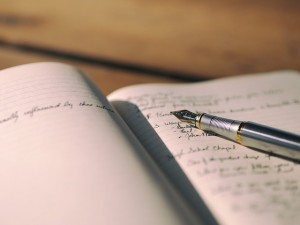 sleep, are you particularly stressed, is your period coming or did it recently end? The goal is to narrow down any little pattern. That will help you untangle the triggers that bring migraines on.
sleep, are you particularly stressed, is your period coming or did it recently end? The goal is to narrow down any little pattern. That will help you untangle the triggers that bring migraines on.
– Get a food intolerance test. Knowing what foods your body reacts to can help your entire system (from your G.I. to your head). I had no clue that my body doesn’t tolerate milk products, and I’ve been eating them my entire life! You may not like the answers, but if you’re desperate for relief, you might be willing to try.
– See your doctor to get a prescription for migraine medication. There are options out there for us migraine sufferers and I have tried many of them. There are meds to take when a migraine starts to attack and there are some to take on a daily basis to ward them off. Choosing to take medication is personal and entirely up to you, but know that options exist, some of them might be helpful.
– See an acupuncturist who can get you back in balance. Acupuncture is beneficial for chronic pain or any other problem, which is often due to an imbalance somewhere in your body. The right acupuncturist can treat this imbalance, and in turn, alleviate some of your headaches, or make the pain less severe when they occur.
What worked for me:
First, please note that everyone is different and what has worked for me may not work you in the same way. Everyone’s migraine journey is unique; still, some of my solutions might help you too.
– Adequate sleep, eating healthily, and drinking lots of water. If I miss out on any of these, especially in combination, I’m in trouble.
– Exercising on a regular basis – it helps my body and brain, even short walks are something.
– Changing my daily diet. After getting the food intolerance test and cutting out my body’s major reactors, in my case, milk, lactose, many seeds, and some alcohol, I noticed a marked difference in my headaches. As a family we also cut out gluten (due to my daughter’s intolerance), and that has helped too.
– Acupuncture – it took me awhile to find the right practitioner (every acupuncturist has their own theory for your ailment, like a doctor), but once I did, she worked wonders in clearing out and detoxing my body and helping my energy level overall, especially my headaches. I went from having migraines a few times a month to having one sporadically every four or five months. She worked wonders for me, but again, everyone’s experience is different.
– Prescription migraine medication – I have tried a variety of these as well, some with varying success. In the end, I take a common medication (Imitrex) when I feel a migraine coming on. Since I have eliminated most triggers, that medication usually stops the migraine before ballooning into a full-blown attack. Prior to my lifestyle changes and acupuncture, the medication didn’t always work and I would take it much more frequently than I liked. Now, I am not waiting anxiously to fill my prescription.
The migraine problem is a hard one to solve, and it might be that you will always be prone to them, but know that you can cut out some of the major contributing factors and, if anything, reduce the times that you get them (and the severity). Good luck, migraine mamas!

 nce in mind means looking at situation and seeing the possibilities in it instead of the lack. Back to the example of being behind on bills and money, we can see the piles of bills and the small stack of money with which to pay them, or we can see the possibilities we have in creating more wealth and paying those bills (which could be anything from a second job to a yard sale to selling unwanted collectibles on E-bay), and we can be grateful to have the opportunity to do those things. We can see how to make that money stack grow instead of continue to shrink. Will that solve all of your money problems? Not yet, but it is a start, a way towards seeing the world in terms of offering you opportunities instead of stripping you of everything and just being glad you don’t have to worry about eating cat food for dinner or contracting Ebola.
nce in mind means looking at situation and seeing the possibilities in it instead of the lack. Back to the example of being behind on bills and money, we can see the piles of bills and the small stack of money with which to pay them, or we can see the possibilities we have in creating more wealth and paying those bills (which could be anything from a second job to a yard sale to selling unwanted collectibles on E-bay), and we can be grateful to have the opportunity to do those things. We can see how to make that money stack grow instead of continue to shrink. Will that solve all of your money problems? Not yet, but it is a start, a way towards seeing the world in terms of offering you opportunities instead of stripping you of everything and just being glad you don’t have to worry about eating cat food for dinner or contracting Ebola. One current example in my life is my choice to take a break from alcohol (more on that in a future post). As I have now noticed, alcohol is everywhere and people are drinking it everywhere too. Instead of seeing all of the beverages I cannot (choose not) to drink, I will focus on the abundance of non-alcoholic drinks that are available (even if it means providing my own). So, as the holiday comes and we sit at the table with our families and friends, try not to focus only on the one person who antagonizes you or triggers you. Instead, notice the many people you enjoy being with, the table covered in food, and the one day out of the year when we overeating is encouraged! Abundance abounds (when we choose to see it).
One current example in my life is my choice to take a break from alcohol (more on that in a future post). As I have now noticed, alcohol is everywhere and people are drinking it everywhere too. Instead of seeing all of the beverages I cannot (choose not) to drink, I will focus on the abundance of non-alcoholic drinks that are available (even if it means providing my own). So, as the holiday comes and we sit at the table with our families and friends, try not to focus only on the one person who antagonizes you or triggers you. Instead, notice the many people you enjoy being with, the table covered in food, and the one day out of the year when we overeating is encouraged! Abundance abounds (when we choose to see it).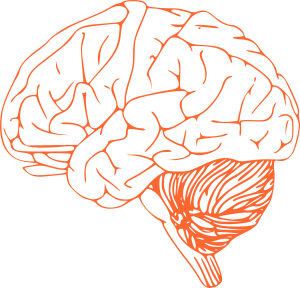 System and, put simply, it’s said to be the link and filter between your conscious and subconscious mind. It’s located in your brain stem and takes instructions from your conscious and passes them onto your subconscious.
System and, put simply, it’s said to be the link and filter between your conscious and subconscious mind. It’s located in your brain stem and takes instructions from your conscious and passes them onto your subconscious.
 kids’ screen time, monitor my own screen time, date night once a week…the list goes on and on. Somewhere in my head I think, yes, that’s it, once I consistently do all those things, my life will be easy and good, even perfect.
kids’ screen time, monitor my own screen time, date night once a week…the list goes on and on. Somewhere in my head I think, yes, that’s it, once I consistently do all those things, my life will be easy and good, even perfect.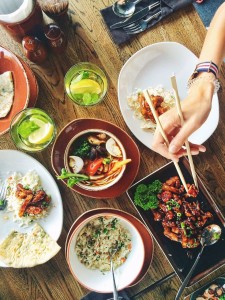 everything you ever loved about eating. It can be torturous and grueling at times, but it does the job. It clears out the junk I’ve been consuming and the habits that started forming as I reached for another dessert, another glass of wine, another handful of chips… Once the cleanse is over, I am mostly in the groove of eating well again.
everything you ever loved about eating. It can be torturous and grueling at times, but it does the job. It clears out the junk I’ve been consuming and the habits that started forming as I reached for another dessert, another glass of wine, another handful of chips… Once the cleanse is over, I am mostly in the groove of eating well again.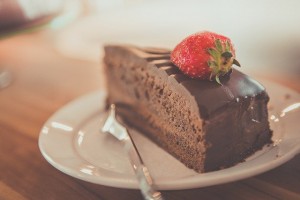 went on and she recognized the pre-programmed messages in her head, she let herself just eat what she wanted. She says that when she wanted peanut M&M’s she would have a few, not the whole bag, and be satisfied. She not only lost weight during this year-long experiment, but said the most significant change is that she doesn’t waste “mental energy agonizing over food or body size anymore.” She says she still stresses over potato chips sometimes, but she doesn’t guilt herself or “promise to make up for it.”
went on and she recognized the pre-programmed messages in her head, she let herself just eat what she wanted. She says that when she wanted peanut M&M’s she would have a few, not the whole bag, and be satisfied. She not only lost weight during this year-long experiment, but said the most significant change is that she doesn’t waste “mental energy agonizing over food or body size anymore.” She says she still stresses over potato chips sometimes, but she doesn’t guilt herself or “promise to make up for it.”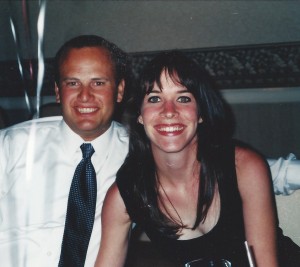
 deliberately make at some point, and then stop thinking about, but continue doing, often every day.” And how habits are loops made up of three parts: the cue (or trigger), the response, and the reward. In the case of the phone, it could be me bored while waiting in line somewhere (cue or trigger) so I check my phone (response), and find that I have email I could read (reward). And so it goes. First in situations of boredom, then in times of avoidance (say, when I don’t want to hear my kids complaining), and finally, just because. How many times have you looked at your phone simply because someone else did? Or checked your email or texts, thinking you heard that little ding, but it was just your imagination. (If you can believe it, the term for that is phantom ringing syndrome.)
deliberately make at some point, and then stop thinking about, but continue doing, often every day.” And how habits are loops made up of three parts: the cue (or trigger), the response, and the reward. In the case of the phone, it could be me bored while waiting in line somewhere (cue or trigger) so I check my phone (response), and find that I have email I could read (reward). And so it goes. First in situations of boredom, then in times of avoidance (say, when I don’t want to hear my kids complaining), and finally, just because. How many times have you looked at your phone simply because someone else did? Or checked your email or texts, thinking you heard that little ding, but it was just your imagination. (If you can believe it, the term for that is phantom ringing syndrome.)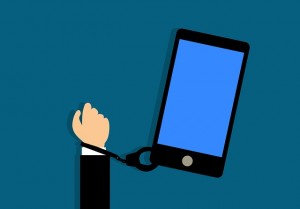 “No problem,” but then I seem to think of reasons why I might need it on (my mom for instance, or some excuse I think is “important”). In the end, it’s just silly anxiety running the show and making me think that the world will end in those twenty-four hours simply because I (the all-important legend in my own mind) don’t have my phone on (in reality, I guess, it is the phone running my show). I will post a follow-up when I complete my thirty days of phone withdrawal and let you know how it went!
“No problem,” but then I seem to think of reasons why I might need it on (my mom for instance, or some excuse I think is “important”). In the end, it’s just silly anxiety running the show and making me think that the world will end in those twenty-four hours simply because I (the all-important legend in my own mind) don’t have my phone on (in reality, I guess, it is the phone running my show). I will post a follow-up when I complete my thirty days of phone withdrawal and let you know how it went!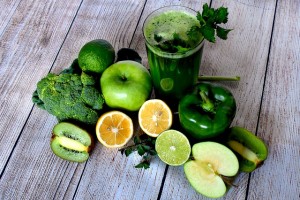 For those who don’t know about this cleanse, the following foods are cut out for thirty days: wheat, sugar, dairy, peanuts, corn, soy, caffeine (except for green tea), canola oil (which is in many foods and is inflammatory), all vinegar except apple cider, pork, beef (except grass-fed, once a week), starchy foods (like potatoes), and sugary fruits (bananas, pineapple, etc). Why, you might ask, would anyone voluntarily cut out ALL of these foods? And, what does that leave a person to eat?! I did this cleanse again because last year it helped with my migraines, my husband did it to lose weight (and he’s a nice, supportive guy in that way), it’s also a good way to get rid of the guilt-ridden pounds and general yuckiness felt after overindulging during the holiday season (which we both did). Those who joined us did it for a variety of reasons: for some it was to lose weight, others wanted to get rid of the guilt too, some wanted to get a good start on the year by eating right, and one other person had mysterious pain issues and wanted to see if a diet change would help alleviate some of the pain.
For those who don’t know about this cleanse, the following foods are cut out for thirty days: wheat, sugar, dairy, peanuts, corn, soy, caffeine (except for green tea), canola oil (which is in many foods and is inflammatory), all vinegar except apple cider, pork, beef (except grass-fed, once a week), starchy foods (like potatoes), and sugary fruits (bananas, pineapple, etc). Why, you might ask, would anyone voluntarily cut out ALL of these foods? And, what does that leave a person to eat?! I did this cleanse again because last year it helped with my migraines, my husband did it to lose weight (and he’s a nice, supportive guy in that way), it’s also a good way to get rid of the guilt-ridden pounds and general yuckiness felt after overindulging during the holiday season (which we both did). Those who joined us did it for a variety of reasons: for some it was to lose weight, others wanted to get rid of the guilt too, some wanted to get a good start on the year by eating right, and one other person had mysterious pain issues and wanted to see if a diet change would help alleviate some of the pain.
 ght’s sleep; for others, it can continue for two to three more days. The pain can be so excruciating that most people are willing try anything to make it go away, and most things don’t work. Adding children to the mix (especially young and needy ones) when a migraine hits tests the strength of the strongest moms!
ght’s sleep; for others, it can continue for two to three more days. The pain can be so excruciating that most people are willing try anything to make it go away, and most things don’t work. Adding children to the mix (especially young and needy ones) when a migraine hits tests the strength of the strongest moms! sleep, are you particularly stressed, is your period coming or did it recently end? The goal is to narrow down any little pattern. That will help you untangle the triggers that bring migraines on.
sleep, are you particularly stressed, is your period coming or did it recently end? The goal is to narrow down any little pattern. That will help you untangle the triggers that bring migraines on.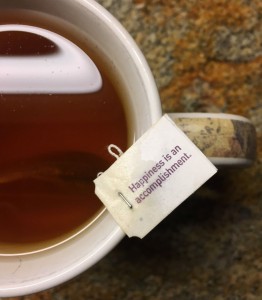 What job would make me happy? What material item can? How much more money do I need to find happiness?
What job would make me happy? What material item can? How much more money do I need to find happiness?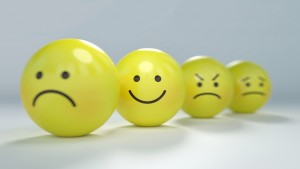 eads to happiness, we must practice it all the time.
eads to happiness, we must practice it all the time.